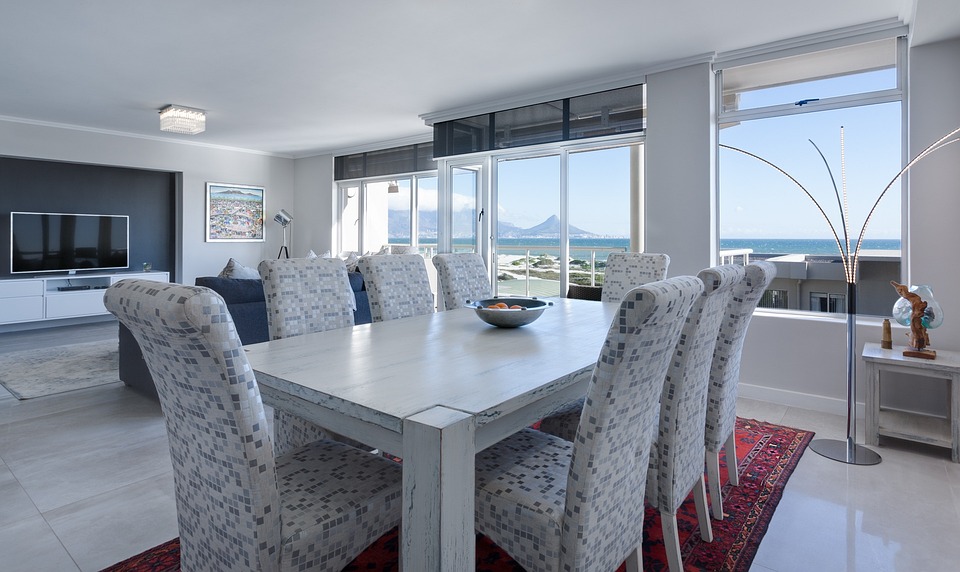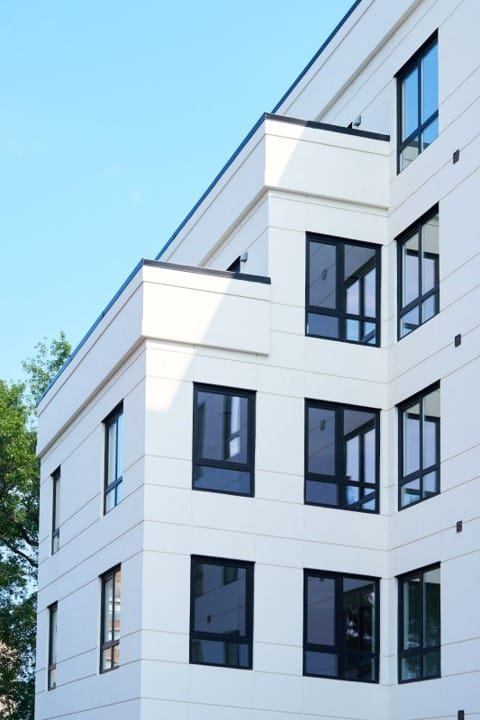
Unwanted noise can be a pervasive issue that affects our daily lives, whether it’s the clamor of traffic outside our windows, the disruptive sounds of neighboring spaces, or the constant hum of machinery in our workplaces. The need for soundproofing solutions in buildings, both residential and commercial, has become increasingly important to create peaceful and productive environments.
In this comprehensive guide, we will explore the key principles and techniques of soundproofing, drawing from expert advice and industry standards. From understanding the impact of noise on our well-being to implementing effective sound control measures, we will provide you with the knowledge and tools to achieve acoustic excellence in your building projects.

The Effects of Noise Pollution
Unwanted noise can have a significant impact on our physical and mental well-being. Research has shown that excessive noise in classrooms leads to lower academic performance in students, while in the workplace, it can decrease productivity and increase stress levels. Moreover, noise disturbances, such as conversations and external disruptions, can significantly affect concentration and overall comfort.
Confidentiality and Privacy
Soundproofing is not only crucial for creating pleasant and peaceful environments but also for maintaining confidentiality and privacy. In spaces like hospitals, doctor’s offices, and conference rooms, ensuring sound isolation is essential to protect sensitive information and provide a conducive atmosphere for discussions and meetings.
Understanding Acoustic Design
The Basics of Architectural Acoustics
Architectural acoustics is the science and art of controlling sound within a built environment. While many people may consider soundproofing a mysterious art, it is, in fact, a well-established discipline that can be integrated into the design process. By addressing acoustics early on, architects can create spaces that not only look aesthetically pleasing but also provide exceptional sound quality.
The Elements of Architectural Acoustic Design
There are three fundamental elements that architects should be aware of when it comes to architectural acoustic design: absorption, reflection, and diffusion.
Sound Isolation
Absorption refers to the process of dampening and reducing the reflection of sound within a room. By incorporating absorbent materials, such as acoustic panels, foam, insulation, and cotton, sound waves are trapped and converted into heat, resulting in a more pleasant sonic environment. Absorption is particularly effective in spaces where clarity and intelligibility are crucial, such as offices, restaurants, concert halls, and music studios.
Reflection
Reflection occurs when sound waves bounce off hard, flat surfaces, leading to echoes and reverberation. Controlling sound reflections is essential in spaces like conference rooms and auditoriums, where clear audio is vital for audience members. Absorbent materials, such as acoustic panels, can be strategically placed to limit or prevent sound reflections, ensuring optimal listening experiences.
Diffusion
Sound diffusion plays a crucial role in creating a balanced listening experience throughout a space. It involves the use of materials with irregular surfaces and varying thicknesses to control the direction and frequency of sound reflections. By distributing sound evenly, diffusion ensures that both high and low-frequency sounds reach all areas of a room, making it particularly valuable in conference rooms, auditoriums, and office buildings with speaker systems.
Incorporating Acoustic Design in Building Plans

Design Development
Including acoustic solutions in building projects should begin during the design phase. Collaboration with acoustical consultants, especially for performance spaces like theaters and auditoriums, can help create optimal sound profiles. Additionally, specifying soundproofing requirements, such as customized wall and ceiling shapes, floating doors, acoustic windows, speaker locations, and room finishes, will ensure that the intended acoustic design is implemented.
Construction Documentation
To ensure that the specified acoustic design is executed correctly, detailed construction documentation should be provided. This documentation should include specific materials, manufacturers, and soundproofing specifications for noise-dampening kits, floor underlayments, and in-wall equipment. By clearly outlining these requirements, contractors can understand and implement the necessary measures to achieve the desired acoustic performance.
Construction Administration
During the construction phase, site visits are essential to ensure that soundproofing materials are installed correctly and that building systems are not generating excessive noise. Paying particular attention to details such as caulking gaps and voids, sound isolation rails, and decoupling drywall from framing can prevent sound leaks and maximize the effectiveness of soundproofing measures. Regular inspections and proper installation techniques are crucial to achieving the desired acoustic outcomes.
Soundproofing in Specific Building Types

Soundproofing in Multi-Family Residential Buildings
Noise control is one of the most common concerns in multi-family residential buildings. Unwanted noise transmission between units and through walls, floors, and windows can disrupt daily life and lead to dissatisfaction among residents. Following building codes and guidelines for sound insulation is essential for maintaining privacy and comfort in these shared environments. Proper construction techniques, such as using insulation, resilient channels, and sound-reducing surfaces, can significantly reduce noise transmission and enhance the overall living experience.
Noise Control in Educational Facilities
Acoustic excellence is crucial in educational settings to support effective learning environments. High noise levels in classrooms can negatively impact student performance and attention. ANSI/ASA S12.60 standards provide guidelines for classroom acoustics, ensuring appropriate sound insulation and reducing distractions. Additionally, voluntary programs like Collaborative for High-Performance Schools (CHPS) and LEED for Schools emphasize the importance of acoustics in creating healthy learning spaces. Implementing sound-absorbing materials, controlling background noise, and optimizing classroom layouts are key strategies for achieving optimal acoustic conditions in educational facilities.
Soundproofing in Commercial Buildings

The Benefits of Sound Insulation
The benefits of sound insulation extend beyond specialized spaces like recording studios or home theaters. Even in commercial buildings not specifically designed for sound recording or distribution, sound insulation can significantly enhance comfort and well-being.
1. Enhanced Comfort and Productivity
Distracting noises can disrupt concentration and hinder productivity. By preventing unwanted sounds from entering a room, sound insulation creates a calm and quiet atmosphere conducive to focus and productivity. It eliminates disturbances, enabling individuals to work, learn, or relax without the constant intrusion of external noise.
2. Elimination of Echoes
Sound waves bouncing around a room can create echoes, which can be particularly disruptive in large spaces. Sound insulation helps absorb these waves, minimizing echoes and improving the overall acoustics of a room. This is especially beneficial in areas where clear communication is essential, such as conference rooms or classrooms.
Choosing the Right Building Materials

When it comes to constructing a building with acoustics in mind, various materials can be used to achieve effective sound insulation. Let’s explore some of the most reliable options available:
1. Acoustic Caulk
Acoustic caulk is a flexible, rubber-like material that is ideal for sealing gaps in doors, windows, and walls. Its sound-absorbing properties make it a valuable tool for preventing noise leakage. By sealing these gaps, you can significantly reduce the transfer of sound between rooms or from outside sources.
2. Soundproofing Spray Foam
Soundproofing spray foam is an easy-to-use material that can be directly sprayed onto walls. It expands and fills gaps, effectively reducing noise transmission. This versatile solution can be applied during construction or as a retrofit option for existing walls.
3. Acoustic Fabric
Thick, heavy fabrics known as acoustic fabrics are excellent for sound insulation. These fabrics can be used as theater curtains, studio blankets, or blackout curtains to absorb and block sound effectively. They not only enhance soundproofing but also add an aesthetic touch to the space.
4. Sound-absorbing acoustic Panels
Sound-absorbing wall panels, such as Hebel panels, are perfect for large rooms that require comprehensive sound insulation. These panels are designed to absorb noise, reducing sound transfer and enhancing the overall acoustic experience. They can be custom-decorated to match the aesthetic of your room while providing exceptional soundproofing performance.
5. Solid Brick Walls
A solid brick wall, constructed with two layers of bricks, offers excellent soundproofing capabilities. The density of the bricks prevents noise penetration, making it an effective solution for blocking external sounds. Solid brick walls are commonly used in commercial buildings to create a quieter and more peaceful environment.
The Importance of Soundproofing in Commercial Buildings

Soundproofing is a critical consideration when it comes to commercial buildings. Let’s explore the advantages of implementing soundproofing measures in such spaces:
1. Code Compliance
Commercial buildings must comply with certain noise standards and building codes, as set by organizations like the International Building Code (IBC). These standards ensure that the building provides a comfortable and safe environment for its occupants. By incorporating soundproofing measures, you not only meet these requirements but also contribute to the overall well-being of those within the building.
2. Improved Indoor Environment
Unwanted noises can disrupt daily routines and affect concentration levels, especially in commercial buildings where individuals are exposed to constant external sounds. Soundproofing helps create a peaceful indoor environment, improving the overall comfort and well-being of occupants. By reducing noise distractions, individuals can focus better, leading to increased productivity and satisfaction.
3. Minimized Background Noises
Commercial buildings are often subjected to background noises from water systems, traffic, or general hustle and bustle in the surrounding area. These noises can be highly disruptive and decrease productivity. Soundproofing mitigates these disturbances, creating a more desirable and conducive atmosphere for work or leisure activities.
Seeking Professional Assistance
Implementing sound insulation in a commercial building requires expertise and knowledge. If you’re facing challenges with external noises impacting your daily routine and productivity, it’s advisable to seek professional help.
Soundproofing Materials and Techniques

Understanding OITC Ratings for Soundproof Buildings
In the quest for peace and tranquility, many homeowners and businesses turn to soundproofing solutions to combat the disruptions caused by unwanted noise. Whether it’s the honking of cars, the screeching of trains, or the roar of planes flying overhead, unwanted noise can lead to sleepless nights and decreased productivity. When looking for effective soundproofing options, it’s important to understand the different rating systems, such as the Outdoor-Indoor Transmission Class (OITC), to ensure that the products you choose will effectively block out exterior noise.
What is Outdoor-Indoor Transmission Class (OITC)?
The Outdoor-Indoor Transmission Class (OITC) is a measurement that indicates the rate of sound transmission between an outdoor and indoor space. Unlike the more commonly known Sound Transmission Class (STC) rating, which measures the sound transmission between interior spaces, the OITC rating specifically focuses on the ability of a barrier to block out exterior noise. OITC ratings are particularly important for areas that are sensitive to low-frequency sounds, such as those caused by traffic, construction, and low-flying airplanes.
The OITC rating scale captures transmission loss results which encompasses the frequency range of most exterior noise sources. By understanding the OITC rating of a soundproofing product, homeowners and businesses can make informed decisions about which materials and products will be most effective in reducing exterior noise.
How is OITC Measured?
The measurement of OITC is similar to that of the STC rating. To determine the OITC rating of a barrier, such as a window or wall, sound intensity reduction is measured in decibels (dB) between the outdoor and indoor spaces. A passing commuter train, for example, may register at 105 dB to a person standing outside on the platform, while someone inside a nearby office building may only register 80 dB due to the barrier of the door or windows. The 25 dB difference represents the transmission loss as a result of the sound absorbed by the barrier.
OITC ratings are calculated over the frequency range of 80 to 4,000 Hz, with a greater emphasis on low-frequency sounds. This is because low-frequency noises, such as traffic and construction sounds, tend to travel farther and can be more challenging to block out. Once a barrier is tested against this frequency range, the results are plotted on a graph and compared against OITC standards set by organizations like the American Society for Testing and Materials (ASTM). This comparison determines the barrier’s OITC rating.
OITC vs STC: Understanding the Difference between Sound Isolation Performance Standards

While the STC rating system has been traditionally used to assess the soundproofing abilities of various barriers, the OITC rating system was developed specifically to measure the effectiveness of exterior barriers against low-frequency sounds. The STC rating system, which measures sound transmission loss between 125 and 4,000 Hz, is more commonly used to evaluate interior elements such as walls, floors, ceilings, and interior doors.
In contrast, as we mentioned above, the OITC rating system measures sound transmission loss between 80 and 4,000 Hz and is specifically designed to evaluate the performance of exterior barriers, including windows, doors, and façades, against low-frequency exterior noise sources. This includes noises such as traffic, construction, and low-flying airplanes.
While the STC rating system is still widely used and preferred for comparing soundproofing abilities, the OITC rating system is valuable in situations where low-frequency sounds are the primary concern. By considering both the STC and OITC ratings, homeowners and businesses can select the most appropriate soundproofing options for their specific needs.
OITC and Soundproof Windows

When it comes to soundproofing windows, the choice between STC and OITC ratings depends on the specific noise issues faced by homeowners and businesses. In general, STC ratings are preferable for addressing a range of sounds across high and low frequencies. However, if the primary source of disruption is low-frequency noise, such as traffic or airplanes, OITC ratings should be taken into consideration.
Soundproof windows, such as those offered by reputable providers like Vistaza Windows, play a crucial role in creating a peaceful and quiet environment. These windows are designed to eliminate up to 95% of unwanted noise and provide additional benefits, such as reduced dirt and drafts. When selecting soundproof windows, it is important to consider both the STC and OITC ratings to ensure maximum effectiveness in blocking out exterior noise.
Factors that can affect the soundproofing capabilities of windows include glass thickness, insulating gas, spacer type, and the number of glass tiles. These factors contribute to the overall performance and sound attenuation properties of the window. By understanding how these factors influence the STC and OITC ratings, homeowners and businesses can make informed decisions about the best soundproofing options for their spaces.
Summary: Choosing Soundproof Windows
Soundproof windows play a significant role in reducing external noise infiltration. When selecting soundproof windows, factors such as OITC and STC ratings should be considered. OITC ratings are especially relevant when dealing with low-frequency noises like heavy traffic or aircraft sounds. However, for a broader range of sound frequencies, STC ratings remain the preferred standard.
Achieving acoustic excellence in buildings requires a comprehensive understanding of soundproofing principles and techniques. By incorporating acoustic design early in the planning process, adhering to building codes and standards, and selecting suitable materials, you can create spaces that promote peace, productivity, and well-being. Whether it’s creating a tranquil home environment, a focused workspace, or optimal learning spaces, soundproofing measures can significantly enhance the quality of our built environment. Embrace the knowledge and tools shared in this guide to embark on your journey toward acoustic excellence in your next building project.




